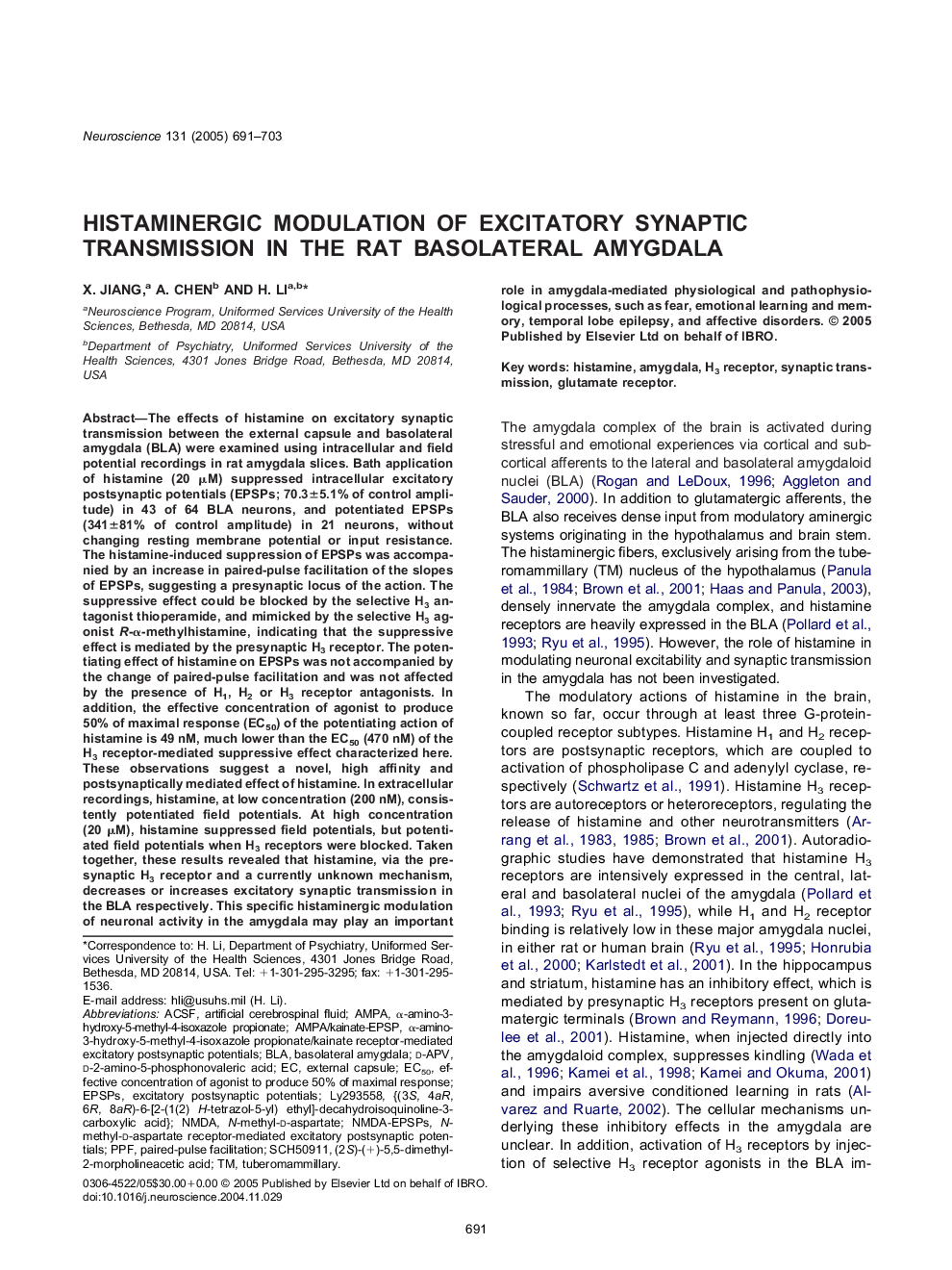| کد مقاله | کد نشریه | سال انتشار | مقاله انگلیسی | نسخه تمام متن |
|---|---|---|---|---|
| 9425786 | 1295891 | 2005 | 13 صفحه PDF | دانلود رایگان |
عنوان انگلیسی مقاله ISI
Histaminergic modulation of excitatory synaptic transmission in the rat basolateral amygdala
دانلود مقاله + سفارش ترجمه
دانلود مقاله ISI انگلیسی
رایگان برای ایرانیان
کلمات کلیدی
N-methyl-d-aspartateLY293558TuberomammillaryEPSPsD-APVα-amino-3-hydroxy-5-methyl-4-isoxazole propionated-2-amino-5-phosphonovaleric acidPPFNMDAaCSFAMPAEC50BLAbasolateral amygdala - amygdala basolateralAmygdala - آمیگدال، بادامهsynaptic transmission - انتقال سیناپسیpaired-pulse facilitation - تسکین زوایای پالسیartificial cerebrospinal fluid - مایع مغزی نخاعی مصنوعیHistamine - هیستامینexcitatory postsynaptic potentials - پتانسیل های پست پراکنده تحریک پذیرexternal capsule - کپسول خارجیH3 receptor - گیرنده H3Glutamate receptor - گیرنده گلومات
موضوعات مرتبط
علوم زیستی و بیوفناوری
علم عصب شناسی
علوم اعصاب (عمومی)
پیش نمایش صفحه اول مقاله

چکیده انگلیسی
The effects of histamine on excitatory synaptic transmission between the external capsule and basolateral amygdala (BLA) were examined using intracellular and field potential recordings in rat amygdala slices. Bath application of histamine (20 μM) suppressed intracellular excitatory postsynaptic potentials (EPSPs; 70.3±5.1% of control amplitude) in 43 of 64 BLA neurons, and potentiated EPSPs (341±81% of control amplitude) in 21 neurons, without changing resting membrane potential or input resistance. The histamine-induced suppression of EPSPs was accompanied by an increase in paired-pulse facilitation of the slopes of EPSPs, suggesting a presynaptic locus of the action. The suppressive effect could be blocked by the selective H3 antagonist thioperamide, and mimicked by the selective H3 agonist R-α-methylhistamine, indicating that the suppressive effect is mediated by the presynaptic H3 receptor. The potentiating effect of histamine on EPSPs was not accompanied by the change of paired-pulse facilitation and was not affected by the presence of H1, H2 or H3 receptor antagonists. In addition, the effective concentration of agonist to produce 50% of maximal response (EC50) of the potentiating action of histamine is 49 nM, much lower than the EC50 (470 nM) of the H3 receptor-mediated suppressive effect characterized here. These observations suggest a novel, high affinity and postsynaptically mediated effect of histamine. In extracellular recordings, histamine, at low concentration (200 nM), consistently potentiated field potentials. At high concentration (20 μM), histamine suppressed field potentials, but potentiated field potentials when H3 receptors were blocked. Taken together, these results revealed that histamine, via the presynaptic H3 receptor and a currently unknown mechanism, decreases or increases excitatory synaptic transmission in the BLA respectively. This specific histaminergic modulation of neuronal activity in the amygdala may play an important role in amygdala-mediated physiological and pathophysiological processes, such as fear, emotional learning and memory, temporal lobe epilepsy, and affective disorders.
ناشر
Database: Elsevier - ScienceDirect (ساینس دایرکت)
Journal: Neuroscience - Volume 131, Issue 3, 2005, Pages 691-703
Journal: Neuroscience - Volume 131, Issue 3, 2005, Pages 691-703
نویسندگان
X. Jiang, A. Chen, H. Li,